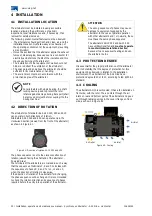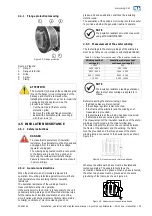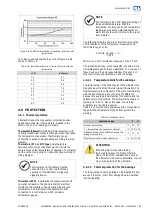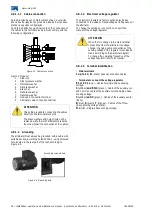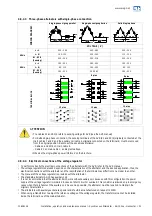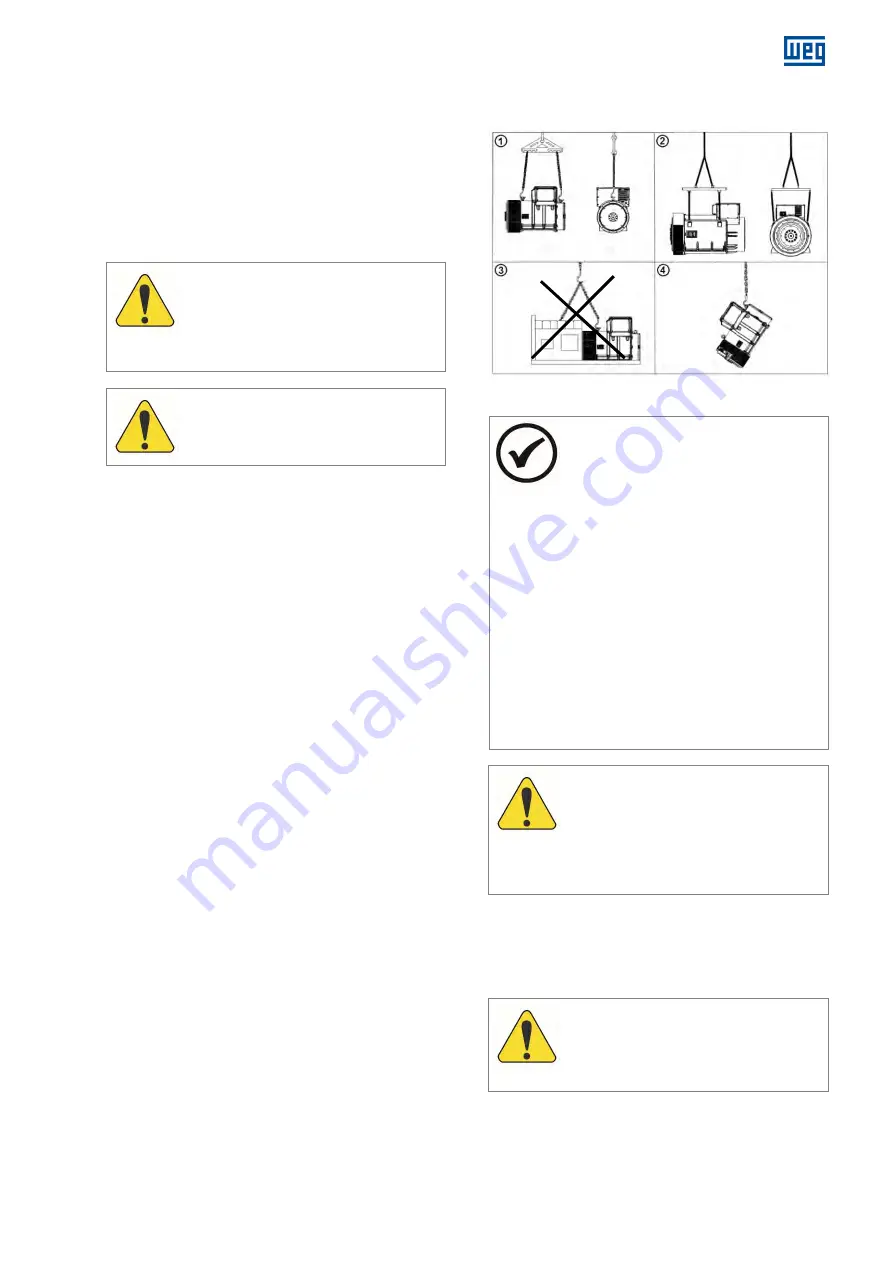
12638144 Installation, operation and maintenance manual – Synchronous Alternator – AG10 line - Horizontal l 17
3
RECEIPT, STORAGE AND HANDLING
3.1
RECEIPT
All supplied alternators are tested and are in proper
operating condition. The machined surfaces are protected
against corrosion. The packaging must be checked
immediately upon receipt to verify that it has not suffered
damage during transport.
ATTENTION
Any damage must be photographed,
documented and reported immediately to the
carrier, the insurer and to WEG. The lack of
notice will void the warranty.
ATTENTION
Additional parts supplied in packages should
be checked on receipt.
When lifting the package, the correct locations for
lifting, the weight stated in the documentation and / or
on the nameplate must be observed, as well as the
capacity and operation of lifting devices;
Alternators packed in crates should always be raised by
their own eyebolts or by appropriate forklift, but should
never be raised by their crates;
The package can never be overturned. Place on the
ground carefully (without causing impacts) to avoid
damage to the bearings;
Do not remove the grease for corrosion protection of
the end of the shaft, flange and coupling discs nor the
plugs closing holes of the terminal boxes;
These protections should remain in place until the final
assembly. After unpacking, you should make a
complete visual inspection of the alternator;
The shaft locking system should be removed just before
the installation and stored in a safe place to be used in
any future transportation of the alternator.
3.2
HANDLING
The position 1 of Figure 3.1, represents the correct way
of handling the alternators AG10 250, 280, 315 and
355;
The position 2 of Figure 3.1, represents the correct way
of handling the alternator AG10 400;
The positions 3 and 4 of Figure 3.1 represents the
incorrect ways of handling the alternators.
The alternator was designed with eyebolts for its lifting.
These eyebolts are designed to lift only the alternator,
additional loads are not permitted;
Cables and lifting devices must be appropriate.
Figure 3.1: Handling of alternator
NOTES
Observe weight indicated.
Do not lift and do not put the alternator on
the ground suddenly thus avoiding damage
to the bearings.
To lift the alternator, use only the existing
eyebolts. If necessary, use a crossbeam to
protect parts of the alternator.
The eyebolts on the covers, bearings,
terminal box, etc., only serve to handle
these components.
Never use the shaft to lift the alternator.
To move the alternator, it must be with the
shaft locked with the locking device
supplied with the alternator.
After removal of the locking device from the
front side, while lifting the alternator it
should not be inclined with the front
downwards at risk of falling of the rotor.
ATTENTION
Steel cables, clevises and lifting equipment
must be appropriate and be capable of
supporting the weight of the alternator, to
avoid accidents, damage to the alternator or
personal injury.
3.3
STORAGE
Any damage to paint or rust protections of machined parts
to be retouched.
ATTENTION
During storage, the heating elements (if any)
must remain connected to prevent water
condensation inside the alternator.




















